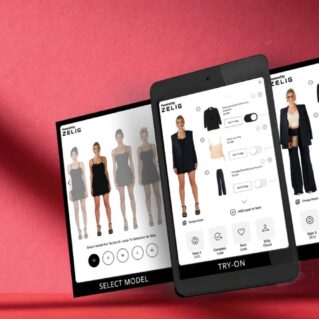America is becoming more multicultural. According to the U.S. Census Bureau, the U.S. is currently roughly 18.3 percent Hispanic or Latino; 13.4 percent African-American; and 5.9 percent Asian; and almost 76.5 percent white, based on how respondents self-identify. And, according to the CENSUS Survey 2019, around 41.76 million people in the U.S. speak Spanish at home.

This is why multicultural marketing has become so important in an ever-changing marketplace. One-size-fits-all messaging is a thing of the past. A successful multicultural marketing strategy exists at the crossroads of translation, culture and emotion. It’s so much more than just translating marketing materials into other languages. It incorporates the images, colors, verbiage, sounds and regional differences that make cultures unique and special.
Williams-Whittle, a Virginia-based marketing firm, defines it this way: “Simply stated, multicultural marketing is the practice of marketing to one or more audiences of a specific ethnicity—typically an ethnicity outside of a country’s majority culture, which is sometimes called the ‘general market.’ In some countries, it can also be referred to as ethnic marketing.”
According to the CENSUS Survey 2019, around 41.76 million people in the U.S. speak Spanish at home.
Marketing and branding firm Jackson Spalding says don’t wait to be perfect. “Watch, listen and identify moments to engage multicultural audiences—and don’t miss the opportunity! Often, brands stall their responses to issues or use their usual one-size-fits-all approach with campaigns because they’re aiming for perfection and are fearful of getting something wrong.”
These four action items can be applied broadly to all multicultural markets. Read this month’s feature article to learn more about marketing specifically to Hispanic markets.
Four Key Multicultural Marketing Tips
1/ Leverage Existing Customers
Most direct selling companies do a great job of telling distributor stories and leveraging real-life experiences for products and the business opportunity. But how about customers? There’s likely to be a much more culturally diverse base among customers. Leverage them to help tell stories, give testimonials and build the overall brand. People love to feel as if they have a hand in building the brand. Consider different ethnicities, languages, genders and locations.
Dating and networking app Bumble launched the “Find Me on Bumble” campaign, showing that sometimes an effective strategy can be just showing off your wide range of real customers. It focused on customers in New York City sharing their experiences using the platform. A video opens with, “Every connection you make on Bumble is an opportunity to meet someone who can impact your life. Inspiring people are everywhere. We wanted to celebrate them.”
Customer stories included a political strategist, an entrepreneur, an opera singer, a dentist and a model. This is more impactful than using actors or stock images. It highlights genuine, relatable people with authentic stories of success on the platform
2/ Showcase Multicultural Diversity Among Groups
Even specific groups can feature incredible diversity. Just because a group shares a specific theme doesn’t mean they all look, act, think, speak and believe the same. Let’s say you’re showcasing a group of single moms who have built successful businesses. They share a strong characteristic that unites them, but each mom has her own unique experience and story shaped largely by her cultural background. The message: Many different types of single moms can succeed in this business.
Adidas’s “Here to Create” campaign featured a chapter called “Calling All Creators” that brought together creatives from an array of backgrounds, talents and industries. Designers, athletes and musicians included Pharrell Williams, Aaron Rodgers, Lionel Messi, Von Miller and more.
The setting was a roundtable discussion about creativity and diversity. “We’re all creators, related by a mindset. It’s not about borders, gender or race. We’re here to create,” the ad stated. The campaign appeared in more than 30 countries.
3/ Create a Robust and Diverse Online Experience
Whether creating a corporate website or the network of distributor replicated sites, multicultural marketing is much more than just toggling between text translations. Diverse images, different colors, and targeted videos with innate language and messaging can be crucial in reaching different cultures and markets.
USANA operates in more than 20 countries. Their corporate website allows you to toggle between many different languages. There’s a diverse showcase of imagery, including stock photos and photos of actual distributors, doctors and even ambassadors from a range of sports such as boxing, skiing, soccer and more. Some companies utilize completely different video and slide business presentations not only for different markets, but for different languages and cultures within the U.S. market.
4/ Equip Distributors with Culturally Targeted Business Presentations
Today’s direct selling strategy involves an array of media and delivery methods for business opportunity presentations. The days of flip charts in someone’s living room are long gone. Interactive slide presentations optimized for mobile devices, sizzle videos and live social media parties are just a few of the most popular formats.
So, does your presentation strategy incorporate a multicultural approach, and is your messaging consistent across all platforms? Many companies provide downloadable presentation formats targeting different languages and cultures. Again, it’s not just about translation. Context, images, music and tone also matter when reaching different audiences.
From the February 2022 issue of Direct Selling News magazine.


